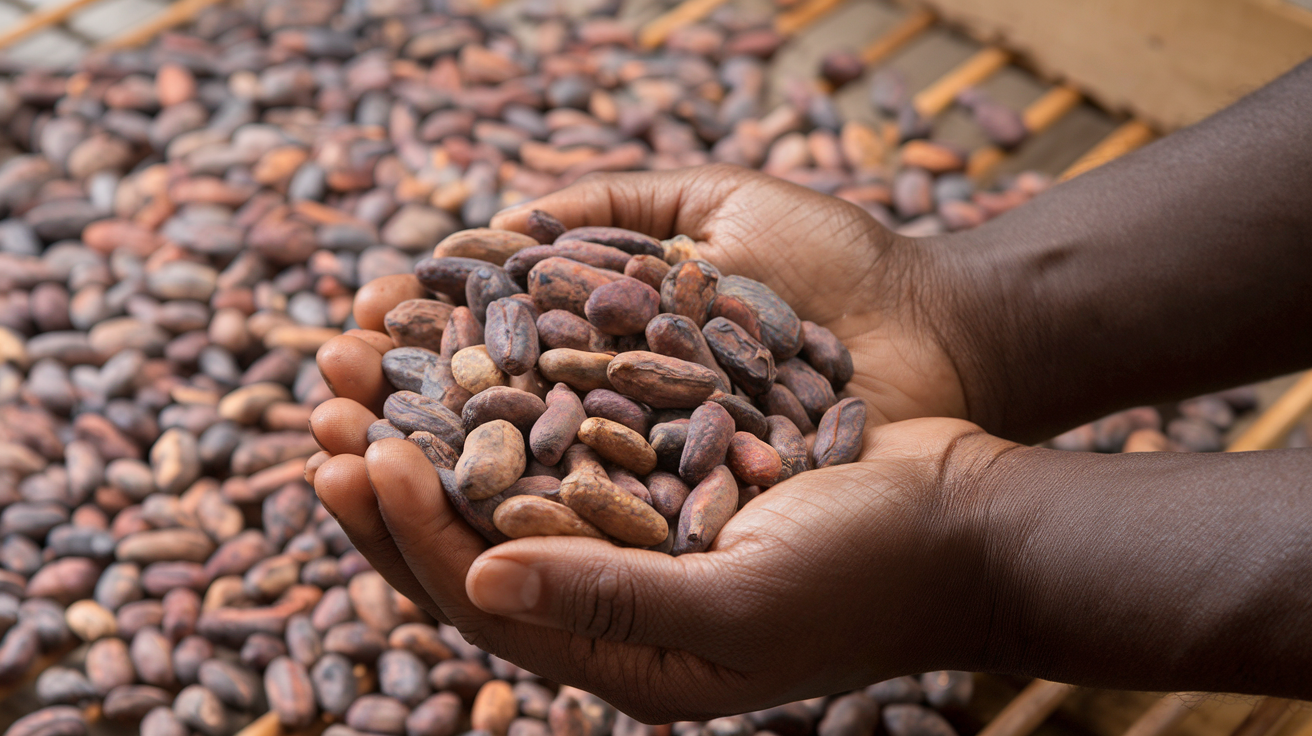Chocolate’s long-running love affair with consumers is about to collide with the harshest cocoa squeeze in living memory. Futures traded in New York vaulted past $12,900 a tonne on 24 April, the loftiest price since records began in the 1970s, and the International Cocoa Organization (ICCO) warns that 2024/25 will be the fourth consecutive year in which global demand outruns supply.
🍫🍫🍫THE CHOCOLATE CRISIS — an UPDATED thread🆕🆕🆕:
Retail chocolate prices are rising (and will increase much further, while shrinkflation will reduce sizes) after wholesale cocoa prices surged to an unthinkable all-time high of ***$10,000 a ton*** on Tuesday.
1/15 @Opinion pic.twitter.com/rX9pUhInz0
— Javier Blas (@JavierBlas) March 26, 2024
Warehouse inventories monitored by ICE have tumbled to a 50-year low, leaving confectioners with little buffer and shoppers staring down the most expensive Halloween in recent memory.
A Perfect Storm Pounds West Africa
Roughly seven beans in every ten still originate in Côte d’Ivoire and Ghana, and both countries have endured a punishing one-two punch from climate and disease.
Excessive rainfall in 2023 fostered outbreaks of black-pod and swollen-shoot illness that, according to Reuters field surveys, trimmed Ivorian yields by about 12 percent.
🚨CHOCOLATE CRISIS? COCOA PRICES HIT 50-YEAR HIGH
Cocoa just hit $10,000 per ton (was $2,000 in 2022), making your chocolate addiction way more expensive. Blame West African crop troubles & wild weather.
Valentine’s Day and Easter candy? Prepare to pay up.
Source: ABC News pic.twitter.com/M8ubNXOs2s
— Mario Nawfal (@MarioNawfal) February 15, 2025
Those losses were followed by a scorching El Niño in 2024 that shrivelled pods and cut Ghana’s projected harvest to its smallest since 2003, a collapse the Financial Times has dubbed an “agricultural crisis in slow motion.” Ageing tree stock, high fertiliser prices and farmer flight into artisanal gold mining compounded the turmoil, while a widening gap between Ghanaian and Ivorian farm-gate prices encouraged cross-border smuggling that further thinned official supplies.
🍫🍫🍫THE CHOCOLATE CRISIS — an UPDATED thread🆕🆕🆕:
Retail chocolate prices are rising (and will increase much further, while shrinkflation will reduce sizes) after wholesale cocoa prices surged to an unthinkable all-time high of ***$10,000 a ton*** on Tuesday.
1/15 @Opinion pic.twitter.com/rX9pUhInz0
— Javier Blas (@JavierBlas) March 26, 2024
The repercussions stretch beyond farms. Two Abidjan grinders suspended operations in February because they could no longer finance beans at record prices, according to Reuters. European processors are paying steep freight premia to secure West-African cocoa, and local chocolate makers as far afield as Malaysia report scaling back output to conserve inventory.
Record Futures Feed Straight Into Factory Gates
Commodity economists at Wells Fargo’s Agri-Food Institute calculate that raw beans now account for more than 60 percent of a standard milk-chocolate bar’s ex-factory cost, up from roughly a third just three years ago. That arithmetic leaves brand owners with stark choices: raise prices, shrink package weights or reformulate.
Hershey told Wall Street in February that surging cocoa would knock as much as 15 percent off 2025 earnings despite mid-single-digit list-price rises.
Mondelez cautioned retailers to expect “multiple waves” of increases across Cadbury, Milka and Toblerone, while Swiss up-market icon Lindt & Sprüngli enacted a second price hike in twelve months and warned of further “mix management”—industry shorthand for coaxing shoppers into smaller gift boxes and seasonal editions with higher margins per gram.
Shrinkflation and the Search for Cocoa Alternatives
Where overt price rises risk alienating consumers, stealth tactics are multiplying. The Guardian’s shrinkflation tracker observed Mars fun-size pouches losing two mini bars while shelf prices climbed eight percent, a change the paper attributed to the “invisible inflation” sweeping confectionery aisles.
Meanwhile, formulators are literally using less chocolate. Nestlé in March introduced a KitKat Plant-Bar that swaps 40 percent of its cocoa butter for sunflower-seed paste, and California start-up Voyage Foods raised $52 million to accelerate lab-grown cocoa cells that could one day bypass the tree entirely, a funding round first reported by Forbes.
Sticker Shock Hits the Candy Aisle
NielsenIQ data show U.S. chocolate prices running 7.8 percent above year-earlier levels, but unit volumes down nearly five percent as cost-weary households trim discretionary treats.
Across the Atlantic, Britain’s Office for National Statistics pegs chocolate-confectionery inflation at 11 percent—quadruple general food inflation—while DW News reports that German retailers expect Easter bunnies to cost 15 percent more than last year.
Big-box chains in the United States have already marked Halloween assortments at $19.99 for a 120-piece chocolate bag—two dollars higher than October 2024—and the National Confectioners Association is urging stores to launch spooky-season promotions in midsummer so shoppers can spread out higher costs.
Will Supply Rebound in Time?
The ICCO’s March update floats the possibility of a modest 142 000-tonne global surplus in 2025/26 if West Africa enjoys normal weather and Latin America’s new plantings deliver.
Ecuador—now the world’s third-largest grower—expects a record crop after switching to high-yield CCN-51 hybrids, while Brazil is expanding acreage in Pará and Bahia. Yet Rabobank still sees futures averaging above $10 000 a tonne through early 2026, and Wells Fargo doubts consumers will feel genuine relief before 2027 because newly planted trees need four to six years to reach full productivity.
Any small surplus that does emerge is likely to rebuild depleted warehouse stocks rather than crash spot prices.
Navigating the 2025 Candy Crunch
Households retain a few levers. Buying Halloween bags during July–August “early bird” promotions typically beats October shelf prices by close to ten percent.
Mixing cheaper gummies or hard candy with chocolate lowers the average cost per treat, and private-label bars often lag national brands in repricing, at least for a quarter or two. Shoppers should also scrutinise price-per-ounce labels, because the “value” packs that looked cheapest a year ago may have quietly shrunk.
Absent a bumper West-African mid-crop, Halloween 2025 is poised to showcase the real-world cost of climate volatility in every jack-o’-lantern. Cocoa has always been a fragile commodity, but this year it will be a luxury to savour—square by square.

